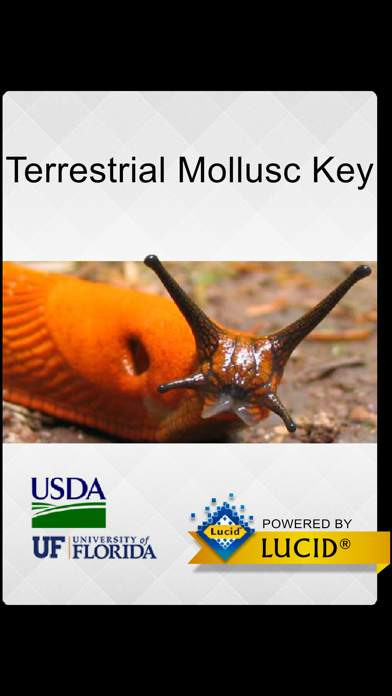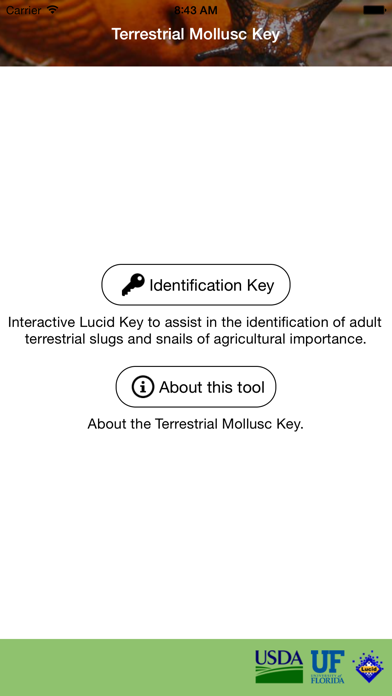App World
My stream

Terrestrial Mollusc Key
The Terrestrial Mollusc key was specifically designed to assist in the identification of adult terrestrial slu...
Free

Store review
The Terrestrial Mollusc key was specifically designed to assist in the identification of adult terrestrial slugs and snails of agricultural importance. The key also includes species of quarantine significance as well as invasive and contaminant mollusc species commonly intercepted at U.S. ports of entry. This key is designed for federal, state and other agencies or organizations within the U.S. that are concerned with the detection and identification of molluscs of significance. This key includes 33 families and 128 species. It should be noted that this key is not inclusive of all mollusc pests, as new species of interest arise almost daily.
The list of species included in this key was generated based on pest species reported in scholarly publications by Barker 2002, Cowie et al. 2009, and Godan 1983 as well as commonly intercepted species documented in the port of entry interception data from US Department of Agriculture, Animal and Plant Health Inspection Service, Plant Protection and Quarantine division (USDA-APHIS-PPQ) and the Florida Department of Agriculture and Consumer Services (FDACS) -Division of Plant Industry.
The key is unable to identify a few entities below the family level. This is true especially for the families Veronicellidae and Succineidae. The major reason for this is the lack of diagnostic morphological characters and the variability of members of these groups. In many cases, it is recommended that molecular techniques be used in the identification of members of these families (Holland and Cowie 2007; Gomes et al. 2010). This inadequacy of the key is, however, mitigated by the fact that most if not all members of these problematic groups are pestiferous and as such are regulated at the family level. The same is true for the species complexes (e.g., Arion hortensis group, A. ater group) included in the key.
The Terrestrial Mollusc Key was developed and published by the Center for Plant Health Science and Technology (CPHST) as part of a cooperative agreement with the Department of Entomology and Nematology, University of Florida and the United States Department of Agriculture (USDA), Animal and Plant Health Inspection Service (APHIS), Plant Protection and Quarantine (PPQ) and is under the direction of Terrence Walters, CPHST Identification Technology Program (ITP) coordinator.
The photographs utilized in this key were generously provided by those credited on each. The photographers and organizations that gave permission to use their images are also credited in the acknowledgements of the original tool (http://idtools.org/id/mollusc/). All drawings were produced by the University of Florida, unless otherwise noted.
Author: Jodi White-McLean (Department of Entomology and Nematology, University of Florida)
Editors and Advisors: John Capinera (Department of Entomology and Nematology, University of Florida) and John Slapcinsky (Florida Museum of Natural History, University of Florida)
Original Illustrations and Photography: Kay Weigel and Lyle Buss (Department of Entomology and Nematology, University of Florida)
Original Source: This key is part of the complete Terrestrial Mollusc Tool (requires internet connection) at http://idtools.org/id/mollusc/
Lucid Mobile key developed by USDA APHIS ITP
5
out of
2 reviews
Size
69.0 MB
Last update
June 6, 2020






 Facebook
Facebook Twitter
Twitter Google plus
Google plus